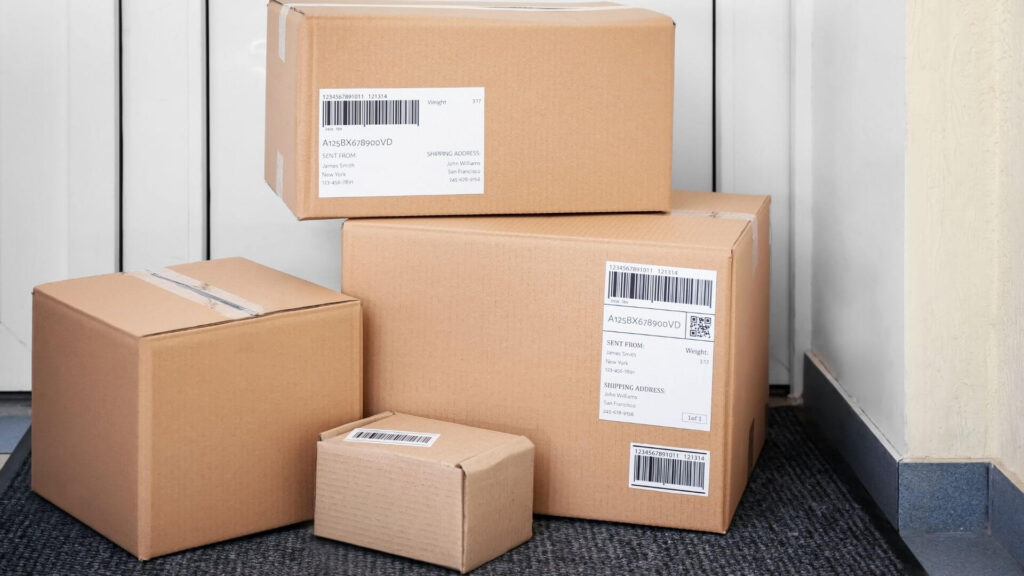What is Volumetric Weight?
Rather than the actual weight of a shipment, the amount of space that a parcel occupies on an aircraft can affect the cost of transporting it. That is what is known as volumetric weight. In volumetric weight calculations, the density of a package is taken into account. Generally speaking, a lighter or less dense item occupies more volume than its actual weight.
A volumetric weight, also known as dimension weight, involves estimated weight based on the length, width, and height of a package, which is used for commercial freight transportation, including courier and postal services.
How is Volumetric Weight Calculated?
To calculate the volumetric weight of a package, multiply the length, width, and height of the package to get the cubic size of the package, then divide that number by the volumetric divisor. 139 is the industry standard for volumetric divisors (sometimes called dimensional divisors), but some carriers use other formulas.
For UPS, the volumetric divisor is 139 for the daily rates but 166 for the retail rates. FedEx uses 139 as its volumetric divisor and USPS has 166 as the volumetric divisor for its priority mail, priority mail express, and non-lightweight parcel select options.
A comparison is made between the volumetric or dimensional weight of the shipment and the actual weight to determine which is greater. Once this is determined, the shipping charge is determined based on the greater weight.
An example of a box of pillows could be used here to explain this more clearly. Suppose you have a large box full of pillows. The box measures around 30 inches x 15 inches x 15 inches but weighs quite light at 5 kilograms. Applying the formula given above (length x width x height / 139), the volumetric weight of this box would be 48.5, rounded up to 49 volumetric kilograms. As the volumetric weight is more than the actual weight of the package, the shipping fee is based on the larger weight which is 49 kilograms.
This works both ways. There could be a small-sized box with heavy metal parts in it. Suppose the dimensions of it would be 12 inches x 11 inches x 8 inches and its physical weight is 10kg. The volumetric weight of this box comes to 7.59 kilograms, rounding off to 8 kilograms. So in this case, the volumetric weight is less than the actual or physical weight of the box. Therefore, the shipping fee would be calculated on the greater weight of the two, that is the physical weight (10 kg).
What is the Difference between Volumetric Weight vs. Actual Weight?
Let’s start by defining the terms, actual weight and volume weight. The logistics industry uses these technical terms to describe basic weight.
The weight that is displayed on the weighing scale is the actual weight of the package. When the weighing scale indicates 1kg, for instance, a package actually weighs 1kg.
On the other hand, volumetric weight is the amount of space that a package occupies based on its dimensions, which is then converted into its equivalent weight. As an example, a package may weigh 1kg on the scale, but since the package is so big with so much bubble wrap inside it, when the volume is calculated, it comes out to be equivalent to 10kg.
The volume weight seems more difficult to comprehend than the actual weight, doesn’t it? The chargeable weight used in logistics is an important concept to understand volume weight. When the size and weight of cargo are compared, the greater number is used to calculate the chargeable weight. The objective is to compare “large and heavy” units against one another.
In logistics, space is limited for the delivery and storage of goods. The calculation of costs can be unfair if you only use one unit of size or weight. An example will help. If you were shipping 1 ton of bottles of water and 1 ton of cotton by air, which one would consume more space?
Despite being heavy, the water is not bulky, but the cotton would take up significantly large space because it is light and bulky. If an airline decides to calculate the cost by actual weight for one ton of cotton, it will lose a lot of money since the bulky cotton occupies a lot of space in an airplane.
This can be prevented by calculating costs according to volume weight. A comparison is made between volume weight and actual weight, and the larger one is recognized as the chargeable weight.
Can Volumetric Weight be Avoided or Reduced?
It is possible to avoid or reduce volumetric weight to a certain extent.
Look at how much weight your current packaging has. You should calculate the weight and dimensions of your products and packaging, particularly if they are light but large. You can either reduce the product’s dimensional weight or change the packaging configuration if the dimensional weight is higher than the actual weight.
To get started, try to minimize your package’s size. Many fulfillment companies that help businesses in managing their shipment also provide services for packaging the products. They minimize shipping costs and maximize space. In most cases, they repackage a product to maximize the space in its box by removing it from the original box.
The second option to reduce volumetric weight is to consider an alternative service that provides a better volumetric divisor. This would automatically lower the dimension weight.
Find out if polybags are a better choice. Rigid containers have the disadvantage that it is often hard to fit a product or several products inside without wasting space. On the other hand, poly bags provide you with similar levels of product protection while also being lighter in weight. They tend to create less void space because they conform to the products contained within. This can lead to significant weight reduction both in actual weight and dimensional weight.
Assembling several products or orders at once helps keep your production and packaging costs down. The system can be leveraged to create a single shipment that’s perfectly balanced in weight and dimensions for multiple products or orders being shipped at once. The possibility of potential losses from volumetric weight rating can be minimized by pairing lower density items with higher density items. A large LTL (less than load) shipment with many products packaged together is most likely to benefit from this method.
Utilize new packaging technologies. There are a variety of technologies that can reduce dimensional weight. Automated packaging machines are the first. As compared to manual packing, where mistakes can be made, machines fill bags or boxes completely and consistently, reducing the chances of unnecessary void space, which incur additional costs to you.
In addition, there are software applications available that will determine the optimal size of the package based on the product dimensions, weight, and durability. By using such software, you make sure that you are only using packaging that is essential for your item.
The Bottom Line
Volumetric weight is a necessity. However, since it helps freight companies maintain their high standard of service, it is also a fair way of calculating shipping costs. Volumetric weight ensures that sellers will be able to charge an accurate amount when shipping large but lightweight items that take up more space as compared to a heavy package that is small in size.





